Perennial Sow Thistle
Perennial sow thistle is common in cultivated areas, ditches, pastures, and undeveloped areas.
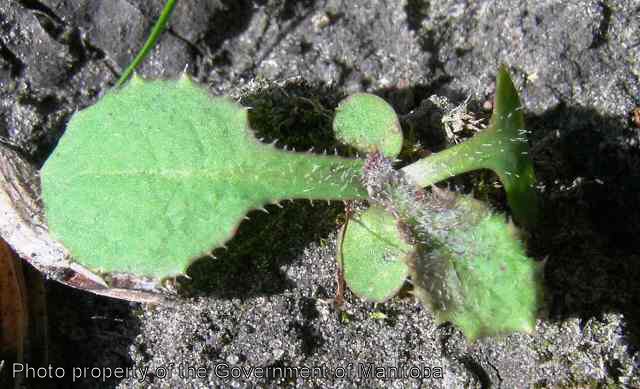 click to enlarge |
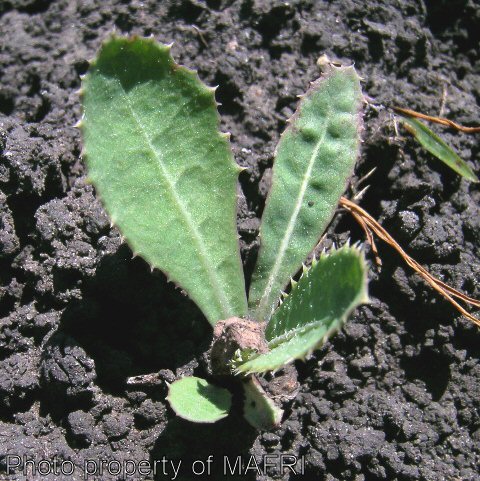 |
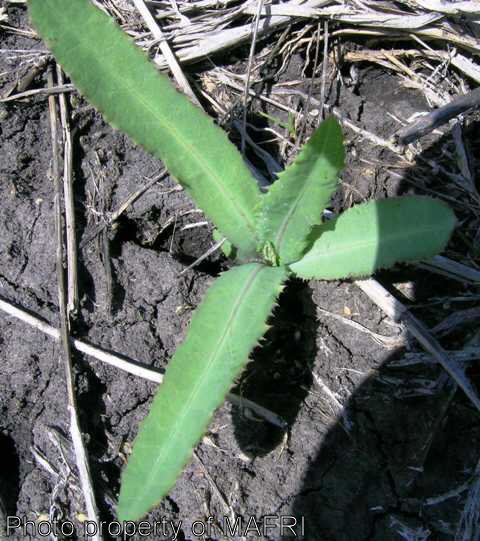 |
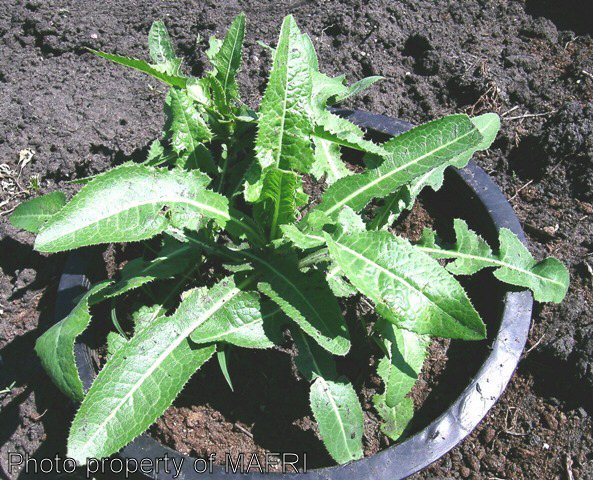 |
 |
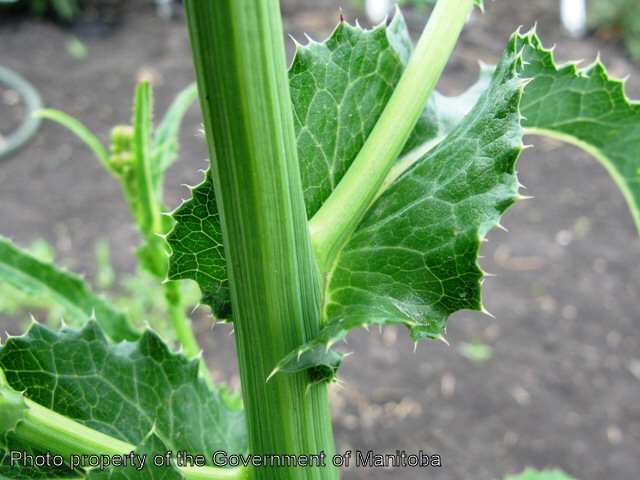 |
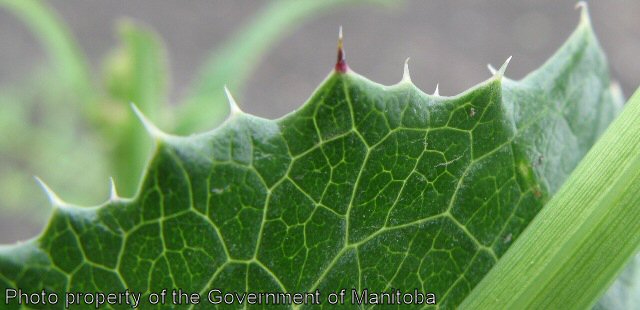 |
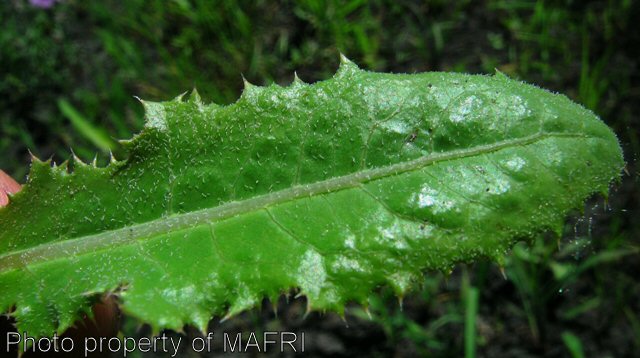 |
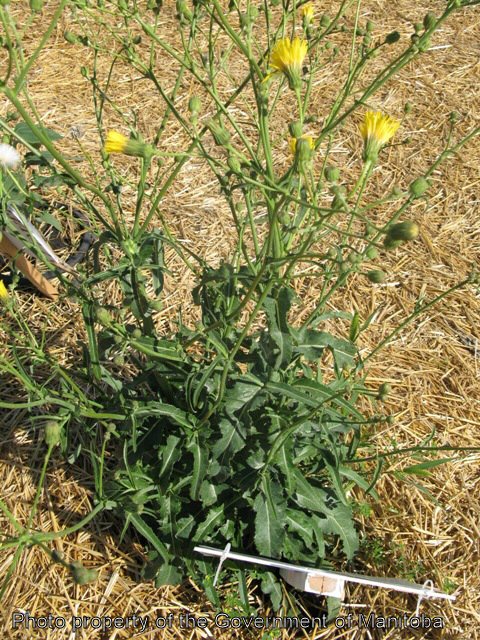 |
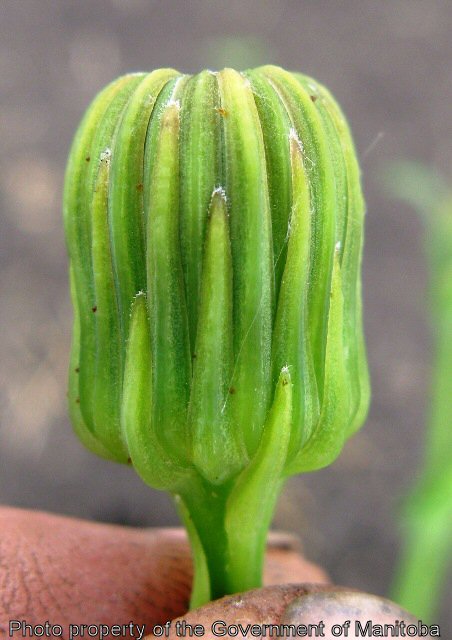 |
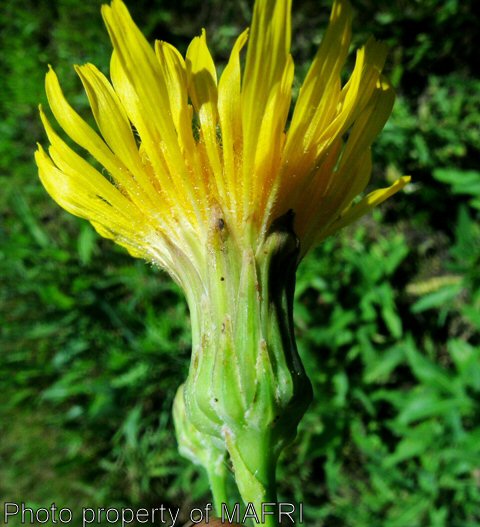 |
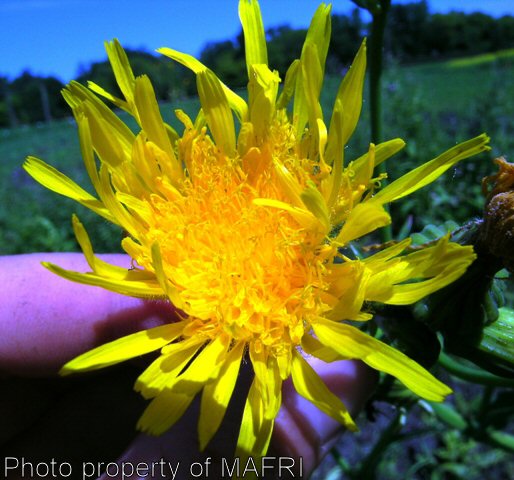 |
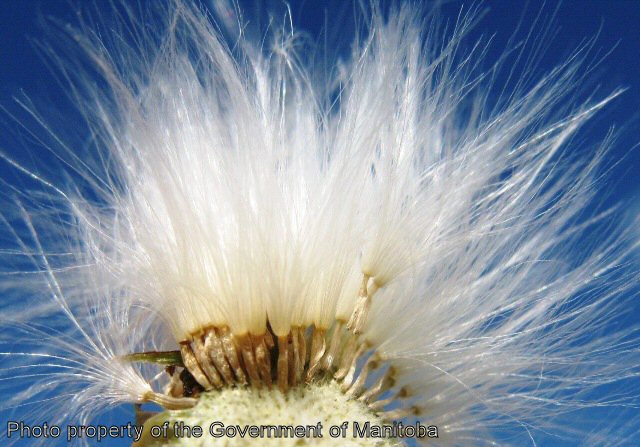 |
 |
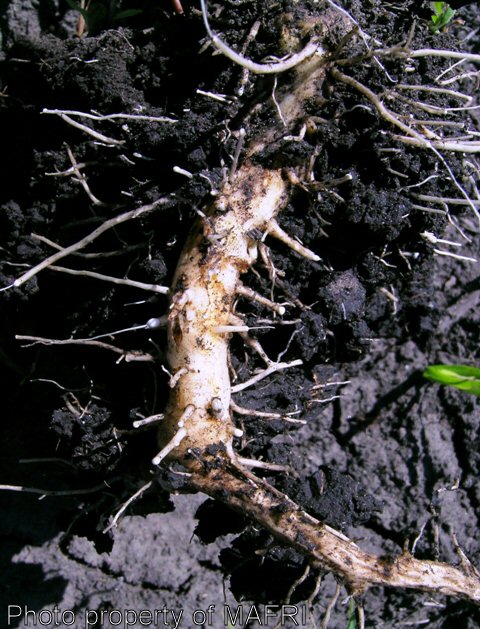 |
Biology
This weed is a tall, creeping perennial that reproduces by seed and horizontal, underground roots. The roots penetrate to a depth of 1.5-3 m (5-10 ft.). The stems are erect, hollow, 0.5-1.2 m (2-4 ft.) high, smooth, stout, and branch at the top. They produce a milky sap. The leaves are alternate, have slightly-toothed margins, and are 15-30 cm (6-12 in.) long. The lower leaves have deeply-cut, backwards-pointed, side lobes. The upper leaves are slightly-toothed and smaller.
The flowers are bright yellow, dandelion-like, and 1.3-5 cm (1-2 in.) across. The seeds are brown, ridged, and wrinkled with a tuft of fine white hairs. Carried by the wind, the seed can establish itself in cultivated fields, roadsides, on the margins of sloughs, and along shelterbelts. It prefers moist, fertile soils.
Scouting Techniques
Take a minimum of 20 weed counts across the field. Perennial sow thistle typically occurs in patches.
Effects On Crop Quality
Perennial sow thistle can slow harvest. Green matter in grain can increase drying costs and dockage.
Threshold/Yield Loss
Light infestations of perennial sow thistle cause yield losses in field crops, horticultural crops and forages.
Control Tips
A multi-year integrated control plan must be used. This could include tillage, patch mowing, in-crop herbicides, pre-harvest and post-harvest herbicides, and crop rotation. Avoid lentils and peas. The keys to control are recognizing the problem and being persistent.
Mechanical control may increase or decrease infestations. Tillage may increase infestations by moving these weeds to new areas of the field or by breaking dormancy of underground buds, resulting in new shoot growth. Tillage during cool, wet conditions provides little control.
Pre-harvest applications of glyphosate and products that contain clopyralid or glufosinate will control perennial sow thistle.

